Review Summary
Expert Rating
The foldable smartphone segment is still in its infancy but despite that, we’ve already witnessed some compelling handsets. Unsurprisingly, Samsung is still leading the pack with its Galaxy Z series of devices but OPPO could turn the tide soon. I say this, because the company recently launched its first foldable flagship in the form of the Find N and – spoiler alert – the device could change the status quo should it launch globally. Here’s why.
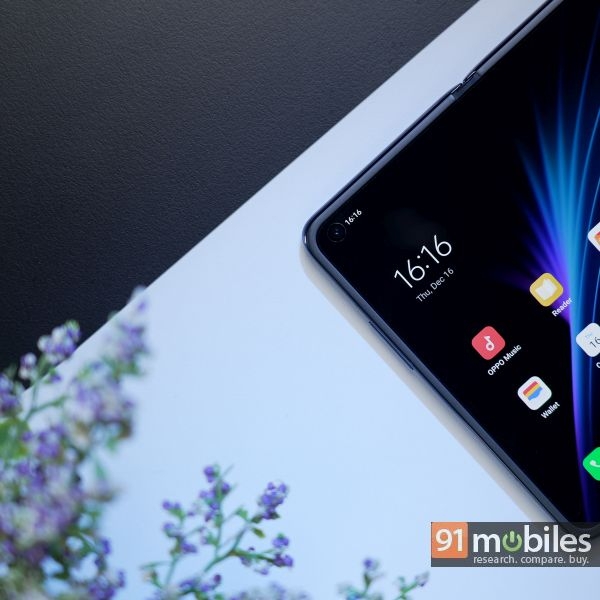
Do note that the OPPO Find N is only available in its home market and correspondingly, users eyeing the foldable will not be able to buy the device anywhere outside of China. Notably, while our loaner unit did ship with the Google Play Store, I couldn’t download some apps and services, including the Netflix app, as well as a handful of benchmarking tools. That’s not to say that the device isn’t fit for the global market – only, the UI and other software elements have been designed to cater to the phone’s home market.
The Lowdown
- I’ve spent a week with the OPPO Find N and in that time, I’ve come to appreciate the handset’s design that much more. Unsurprisingly, the smartphone cuts a handsome package and looks regal from every which angle. What’s more, as awestrucking as the device is when it’s unfolded, the smartphone looks every bit as eye-catching when in its folded state. The back of the phone, for one, offers a shimmery finish that glitters under the sun. The handset’s silver-coloured hinge also adds a touch of pizazz to the phone’s otherwise monolithic hue. That’s not all, as the hinge has a neat contour towards the middle with the company’s ‘Designed for Find’ inscription etched on it. All said and done, the smartphone’s design exudes character, which is quite refreshing to see.
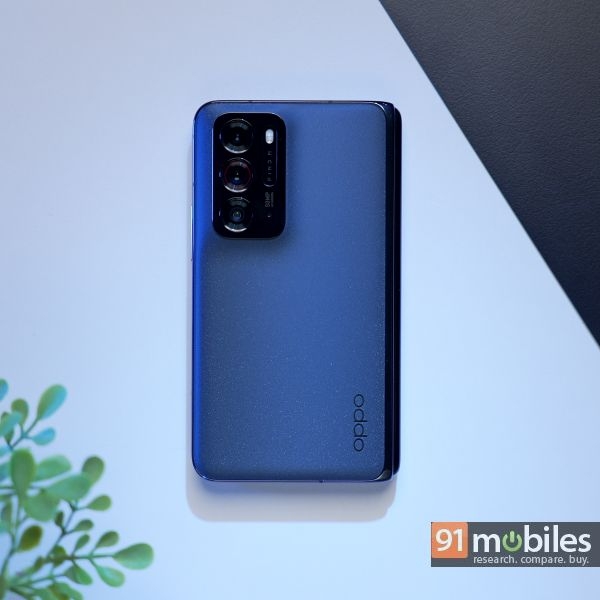
- More importantly, unlike its closest competitor, the Galaxy Z Fold3, the device offers a much more pocketable footprint. Now, I’ve already discussed the differences in the design of the two foldables in my in-depth comparison, so do give it a read if you want to know how the duo set themselves apart. Suffice it to say, the Find N isn’t just a good-looking foldable, but the device could give compact flagships a run for their money too.
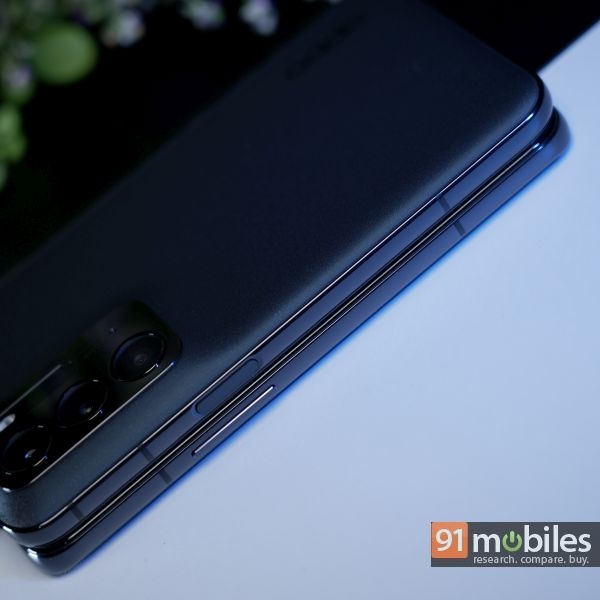
- As for the ports and the I/O, the OPPO Find N ships with a power button on its right-hand spine which coincidentally, also houses the device’s capacitive fingerprint sensor. During my stint with the foldable, I found the sensor’s accuracy to my liking. What’s more, the smartphone’s pocketable form factor allowed me to comfortably reach the sensor with my thumb. Of course, you can also unlock the phone by means of facial recognition, which worked quite well too. Other than that, the device ships with a downward-firing, dual-speaker setup and a USB Type-C port for charging. Unfortunately, despite the phone’s girth, the Find N omits a headphone jack. Moreover, while the phone does get a layer of Corning’s Gorilla Glass Victus on the front and the back, the handset isn’t IP certified, so you might want to exercise caution when using the phone near a pool, or in a bathroom.
- I’d like to add that the Find N offers fantastic haptics which will not go unappreciated by serious texters. Furthermore, while the phone’s dual-speakers can get quite loud, they don’t offer ample stereo separation.

- The Find N offers two screens – a 5.49-inch, FHD+, AMOLED cover display and a 7.1-inch, FHD+, AMOLED inner display. Both the screens offer ample brightness and can reach up to 1,000 nits, making them suitable for outdoor usage. With that said, the Find N’s cover display is capped at 60Hz and consequently, you might find the animations and the UI transitions to be a bit jarring. Thankfully, the inner screen or as OPPO calls it – the Serene display – is backed by LTPO technology and offers an adaptive refresh rate of up to 120Hz. As a result, the display can smartly variate the refresh rate basis what is being relayed on the screen. Unfortunately, I couldn’t test the HDR capabilities of the displays as the Netflix app refused to download on the phone. Regardless, the screens offer a fantastic movie-watching experience and I revelled watching YouTube videos and movies on the Find N’s bigger display.
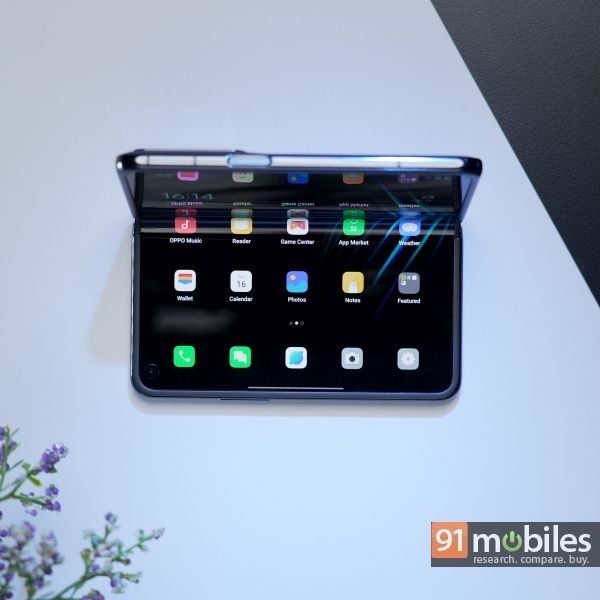
- Now, going into the review, I expected the phone’s inner display to ship with a noticeable crease. On the contrary, the Find N’s Serene screen is akin to what you’d find on a conventional smartphone. Making matters even more interesting, the Galaxy Z Fold3’s display is marred by a rather chunky groove – so much so, despite the screen’s higher resolution, I never got acclimated to using it on the fly. The Find N’s crease-less panel, on the other hand, kept my OCD at bay and looked much, much nicer.
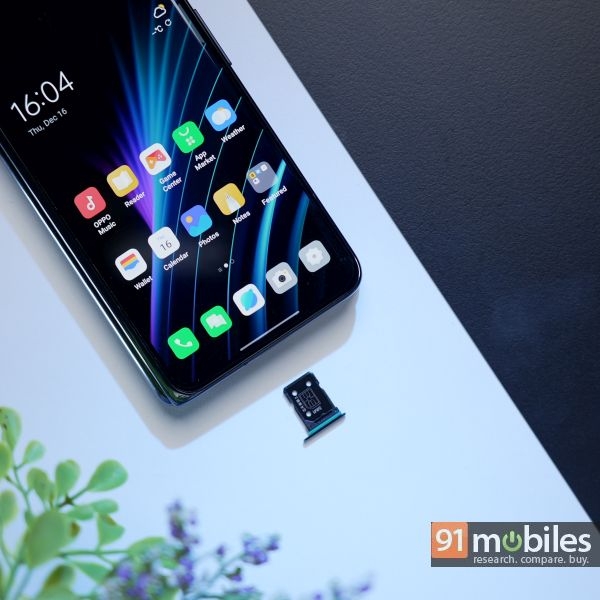
- The Find N cuts no corners in the performance department and the device ships with Qualcomm’s Snapdragon 888 processor, which works alongside speedy LPDDR5 memory and UFS 3.1 storage. Unsurprisingly, the Find N could comfortably run demanding games at the best graphics and FPS settings. Furthermore, I didn’t run into any app scaling issues on the device either and could play titles like BGMI on both, the smaller as well as the bigger display. Interestingly, unlike other Snapdragon 888 backed devices, the Find N didn’t throttle all that much either, which can be accredited to the handset’s unique design which dissipates heat efficiently. Rest assured, buyers opting for the device will find little to complain about its performance.
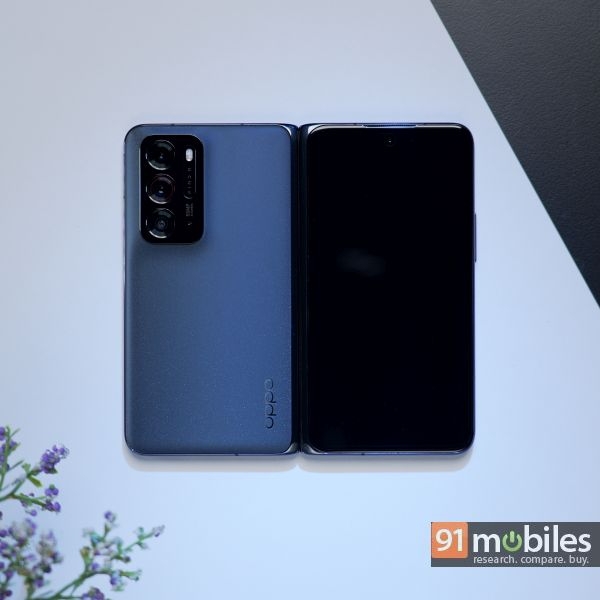
- Foldables are designed with productivity in mind and consequently, offer a slew of unique software features to get any job done quicker. But, before I get into that, you should know that the OPPO Find N boots Android 11 with a skin of ColorOS v12 on top. Now, for the most part, the software experience on the Find N will be similar to say, the OPPO Find X2. However, the Find N comes with a few aces up its sleeves. Firstly, the smartphone makes split-window multitasking extremely seamless and users can simply swipe down along the phone’s imperceptible crease to open two apps side by side. Furthermore, with an app open, pinching inwards with five fingers will open the service in a windowed mode. You can then drag the miniaturised version of the app on your home screen and even open other apps on top of it.
- The Find N can seamlessly juggle apps between its two screens too. So, say you are watching a clip on YouTube on the bigger display. Upon closing the screen, the Find N gives you a three-second window to swipe up on the cover display. In doing so, the app will seamlessly transition to the smaller screen. As taxing as it might sound, the feature is quite intuitive and it saves you the trouble of manually selecting which apps can transition from the bigger to the smaller screen, like you’d have to do on the Galaxy Z Fold3.
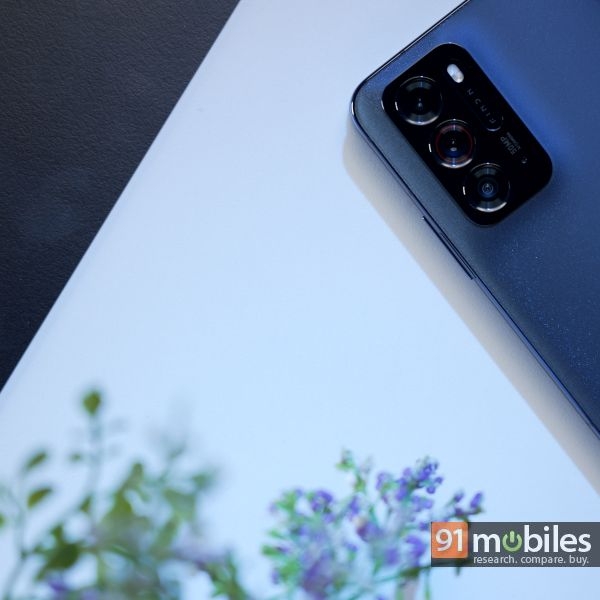
- The OPPO Find N can click quality photos too and the handset is backed by a 50MP Sony IMX766 sensor which works alongside a 16MP Sony IMX481 UW sensor and a 13MP telephoto lens. For selfies, the device gets a pair of 32MP Sony IMX615 snappers. Coming to the quality of the photos, the Find N’s images offer ample details and sharpness during the day. Moreover, the main sensor brings out the shadows in a shot quite well, so objects like the bark of a tree don’t appear unnaturally darkened. That said, the unit’s colour science leaves a bit to be desired and despite turning off AI colour filters, images shot from the phone appear a tad oversaturated.
- The telephoto lens does a serviceable job too and clicks detailed albeit slightly oversharpened photos. The ultra-wide sensor, however, leaves a bit to be desired and I noticed that objects towards the edges of the composition were rendered quite blurry. Interestingly, the Find N allows users to switch the viewfinder over to the cover screen when the device is unfolded. Consequently, the person being clicked can assess the frame and guide the photographer to snap the photo to their liking.
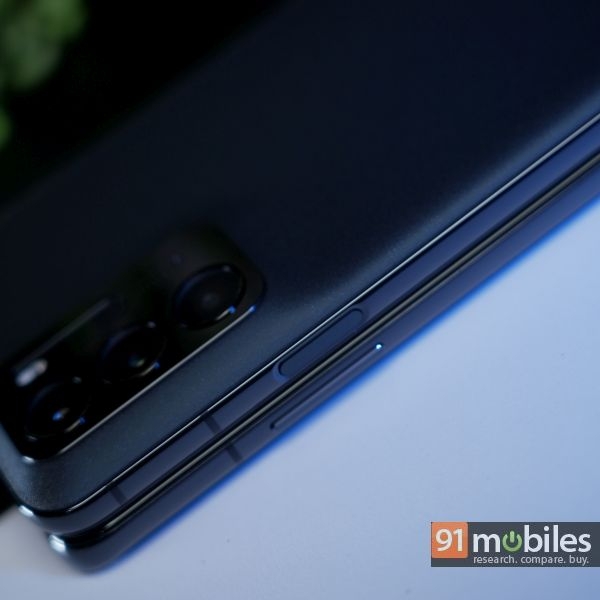
- You can use the aforementioned trick to click high-quality selfies from the rear camera too. Although, I doubt anyone would find the quality of the phone’s dedicated selfie shooters to be too shabby. To wit, the Find N’s selfie cameras click fantastic albeit a bit beautified selfies. The images offer oodles of detail and the cameras handle exposure quite well too. The same goes for the lowlight images too and shots snapped with the phone’s night mode enabled offer a lot of details. The images don’t appear grossly oversharpened either, and the sensor keeps the lens flaring under check as well.
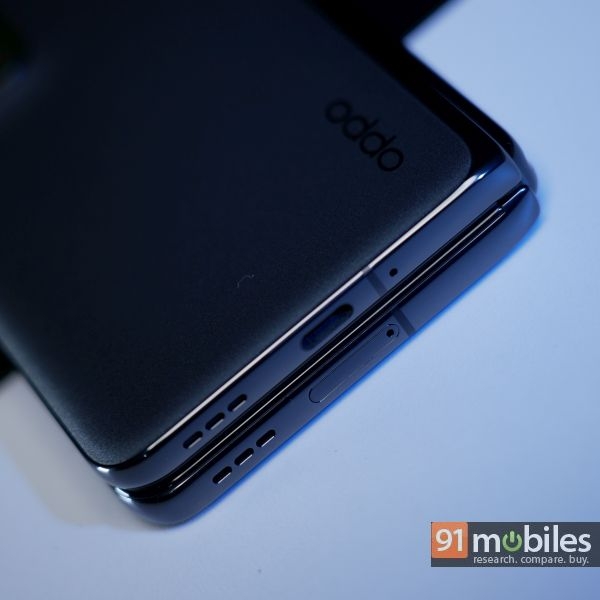
- The Find N ships with a 4,500mAh battery pack which on moderate usage, lasted me a full day. I had to plug the phone in around 9PM, and the device took a little over an hour to charge completely.
Verdict
As prefaced previously, the Find N is available for purchase in China for a starting price of 7,699 Yuan, which translates to around Rs 92K. For the price, the device undercuts the Z Fold 3 significantly and despite that, puts forth a compelling package with no deal-breaking compromises. Rest assured, the phone has undoubtedly ignited a spark in the foldable segment. Hopefully, OPPO will make its foldable range available globally soon. Do let us know in the comments below if you’d like to see OPPO launch the device in India. As always, stay tuned to our blog for more reviews.
Editor’s rating: 4 / 5
Pros:
- Stylish, unique design
- No perceptible crease on the main display
- Excellent performer
- Capable main camera
Cons:
- No headphone jack
- No IP rating
- Limited availability
 OPPO Find N 5G OPPO Find N 5G | vs |  Samsung Galaxy Z Fold 3 Samsung Galaxy Z Fold 3 |
 OPPO Find N 5G OPPO Find N 5G | vs |  Samsung Galaxy Z Flip 3 Samsung Galaxy Z Flip 3 |















